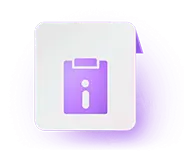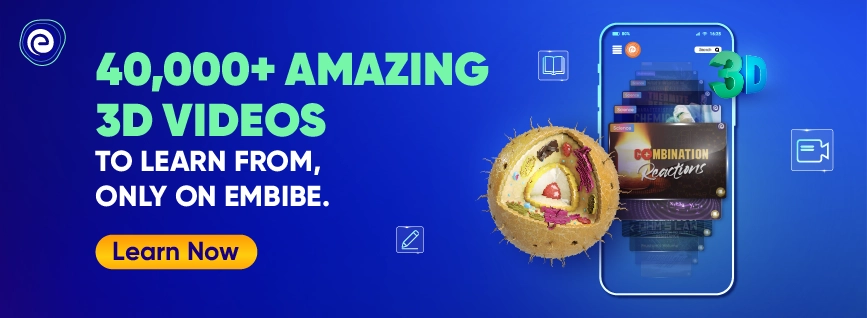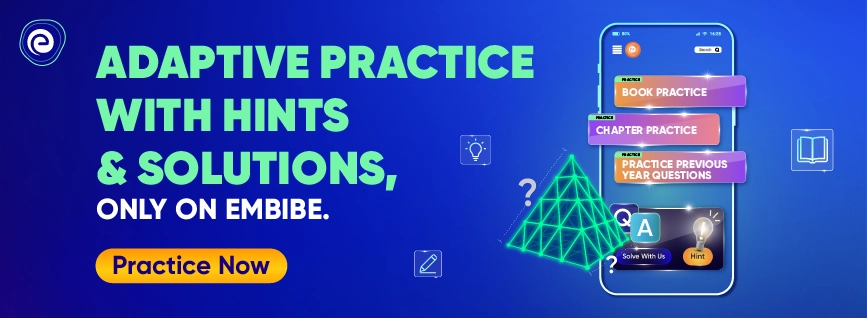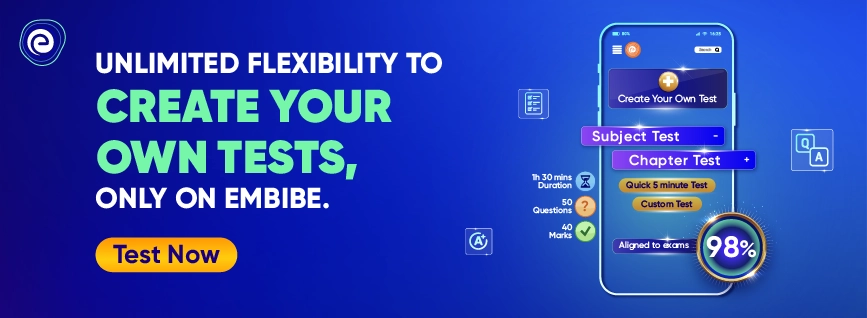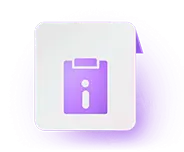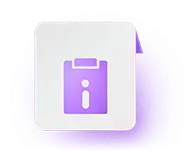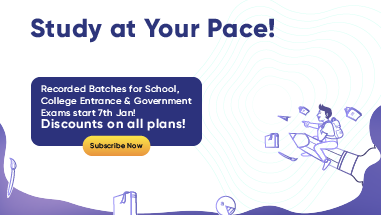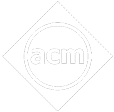- Written by nikhil
- Last Modified on 20-02-2023
Assam Board Class 7 Exam 2023
Class 7 is a stepping stone to gettingadmission into high school. Although class 7 is considered easy, it also lays a foundation with fundamentals that help students to get a better hold on higher studies. The Board of Secondary Education, Assam (SEBA) is responsible for designing the curriculum and syllabus for Class 7. Class 7 students are evaluated based on school-level exams.
Students are assessed for their half-yearly and annual exams separately with the prescribed guidelines of the Assam Board. Both Scholastic and co-scholastic areas are evaluated in both terms aiming at the overall growth of the student. Continue reading the article to get complete information on Assam Board Class 7.
Assam Board Class 7 Exam Summary
The Assam Board Class 7 education system is a part of the larger education system in the state of Assam, India. The curriculum of Class 7 covers a range of subjects including Mathematics, Science, Social Science, English, and Assamese. The academic year for Class 7 generally runs from April to March, and students are evaluated through a system of internal assessments, assignments, and final exams.
The main objective of the Assam Board Class 7 education system is to provide a strong foundation for students to develop their skills, knowledge, and understanding of various subjects, and to prepare them for higher education. The board also aims to provide a holistic education to the students, which not only focuses on academic excellence but also promotes moral and ethical values, as well as physical and mental well-being.
Assam Board Official Website
https://ssa.assam.gov.in/
Assam Board Class 7 Syllabus
Students appearing for class 7 exams must be aware of the syllabus to prepare for the exam accordingly. It is advisable that the students follow the exam syllabus thoroughly before they start with their preparation. The following data provides the subject-wise chapters of the Assam Board Class 7 syllabus.
Assam Board Class 7 Syllabus for Mathematics
Class 7 Mathematics syllabus provides a strong foundation of basics with different topics, which will help students in critical thinking and improve mathematical skills. Students must make sure to practice the Mathematics questions properly on a regular basis. The following table provides the class 7 Maths syllabus:
| Chapter Number |
Name of the Chapter |
| 1 |
Integers |
| 2 |
Fractions and Decimals |
| 3 |
Data Handling |
| 4 |
Simple Equations |
| 5 |
Lines and Angles |
| 6 |
The Triangle and its Properties |
| 7 |
Congruence of Triangles |
| 8 |
Comparing Quantities |
| 9 |
Rational Numbers |
| 10 |
Practical Geometry |
| 11 |
Perimeter and Area |
| 12 |
Algebraic Expressions |
| 13 |
Exponents and Powers |
| 14 |
Symmetry |
| 15 |
Visualising Solid Shapes |
Assam Board Class 7 Science Syllabus
To keep students active and engaged in the learning process, the Science syllabus is structured with several exciting activities, experiments, and projects. When students focus on the Assam Board Class 7 syllabus, it will make it easier for the students to understand the topics and exam pattern. The table below provides the class 7 Science syllabus:
| Chapter Number |
Name of the Chapter |
| 1 |
Nutrition in Plants |
| 2 |
Nutrition in Animals |
| 3 |
Fiber to Fabric |
| 4 |
Heat |
| 5 |
Acids, Bases, and Salts |
| 6 |
Physical and Chemical Changes |
| 7 |
Weather, Climate and Adaptation of Animals to Climate |
| 8 |
Winds, Storms, and Cyclones |
| 9 |
Soil |
| 10 |
Respiration in Organisms |
| 11 |
Transportation in Animals and Plants |
| 12 |
Reproduction in Plants |
| 13 |
Motion and Time |
| 14 |
Electric Current and Its Effects |
| 15 |
Light |
| 16 |
Water: A Precious Resource |
| 17 |
Forest: Our Lifeline |
| 18 |
Waste Water Story |
Assam Board Class 7 Social Science Syllabus
The Social Science syllabus for SEBA Class 7 is divided into three portions, namely Civics, History, and Geography. The syllabus focuses on developing social awareness and knowing our history, duties, rights, earth and more. The table below provides details on the Assam Board class 7 social science syllabus:
| Chapter Number |
Section |
Chapter Name |
| 1 |
Civic |
On Equality |
| 2 |
Role of Government in Health |
| 3 |
How the State Government Works |
| 4 |
Growing Up as Boys and Girls |
| 5 |
Women Change the World |
| 6 |
Understanding Media |
| 7 |
Understanding Advertising |
| 8 |
Markets Around Us |
| 9 |
A Shirt in the Market |
| 10 |
History |
Tracing Changes Through a Thousand Years |
| 11 |
New Kings and Kingdoms |
| 12 |
The Delhi Sultans |
| 13 |
The Mughal Empire |
| 14 |
Rulers and Buildings |
| 15 |
Towns, Traders, and Craftsperson |
| 16 |
Tribes, Nomads, and Settled Communities |
| 17 |
Devotional Paths to the Divine |
| 18 |
The Making of Regional Cultures |
| 19 |
Eighteenth-Century Political Formations |
| 20 |
Geography |
Environment |
| 21 |
Inside Our Earth |
| 22 |
Our Changing Earth |
| 23 |
Air |
| 24 |
Water |
| 25 |
Natural Vegetation and Wildlife |
| 26 |
Human Environment Settlement, Transport and Communication. |
| 27 |
Human Environment and Interaction – The Tropical and Subtropical Region |
| 28 |
Life in Temperate Grasslands |
| 29 |
Life in the Deserts |
Assam Board Class 7 English Syllabus
English is one of the most important subjects and the primary language subject for students in Assam Board Class 7. Following the syllabus will help the students enhance their learning capabilities. Apart from that, it will also improve their reading and writing skills. The following table provides the Assam Board class 7 syllabus for English:
| Chapter Number |
Topic |
| 1 |
Hobbies |
| 2 |
Uruka Adventure |
| 3 |
From the Diary of Anne Frank |
| 4 |
Kindness |
| 5 |
The Daffodils |
| 6 |
Dhunus Guitar |
| 7 |
A Child’s Beauty |
| 8 |
Women in Space |
Also Check
Assam Board Class 7 Study Plan to Maximise Score
Although class 7 is considered easy, students must prepare well to ace the exam. Students can follow the below-mentioned preparation tips and modify their study plan to get the desired scores. In the sections below, we have provided the preparation tips and detailed study plan that will help students prepare for the exam in a proper manner.
Assam Board Class 7 Preparation Tips
To prepare for the Assam Board Class 7 exams, students should focus on developing a strong foundation in all the subjects and regularly revise the topics covered in class. Additionally, they should practice solving sample papers and previous year question papers to gain a better understanding of the exam pattern. Students can follow the below-mentioned preparation tips to ace the exam with desired marks:
- Go Through the Syllabus: Students must be well aware of the Assam Board Class 7 syllabus as it will help them prepare a well-structured study plan and distribute time to cover all the topics before the exam.
- Pay Attention in Class: Students must pay extra attention in class as it helps them understand topics better, remember the concept for a longer period and solves most of their doubts and queries.
- Previous Year’s Question Papers: Students must go through the previous year’s question paper as it helps them get an idea of the previous year’s exam trends like the question weightage, marking scheme and frequently asked questions.
- Study Online: Understanding some concepts can be difficult; to get clear and repeated explanations, students can access the Embibe app. The app provides chapter-wise explanations that can help students clear their doubts.
- Mock Tests: Mock tests are a great source of revision that helps students improve their preparation levels. Solving mock tests regularly can help candidates analyse their preparation and reduce their mistakes and improve on weak areas.
Students can attempt mock tests provided by Embibe for to improve their test-taking skills. The Embibe mock tests are created with an increasing difficulty level to challenge one’s preparation. The tests can help students analyse their strong and weak points and improve their scores gradually.
Assam Board Class 7 Detailed Study Plan
A well-structured study plan can help students complete their syllabus and provide enough time to help them complete their revision. A detailed study plan ensures that the students have gained proficiency over all subjects and score good marks. Students can follow the below-mentioned subject-wise strategies for effective preparations:
Study Strategy for Mathematics
- Solve the exercise questions and homework questions without fail.
- Make a flashcard or chart of important formulas and rules.
Study Strategy for Science
- Make a list of chemical formulas, equations, etc.
- Learn the numerical problems and laws clearly.
- Draw the neat labelled diagrams using a pencil.
Study Strategy for Social Science
- The map is the scoring part of the question paper; therefore, give time to learn the map and important places.
- Make a list of important dates, events, and laws on a flashcard or chart.
- It is better to write long answers in points than lengthy paragraphs.
Study Strategy for Language
- Write more to improve your writing skills and reduce spelling mistakes.
- Be thorough with grammar, as it is the scoring part of the paper.
FAQs on Assam Board Class 7
The following are the most frequently asked questions on Assam Board Class 7:
Q: Is Assam Board Class 7 difficult to clear?
Ans: Class 7 is considered as easy. To secure desired marks, students must prepare at their best level.
Q: How can I prepare for the Assam Board class 7 exams?
Ans: Apart from paying attention in class, students can improve their preparations by preparing handwritten notes and solving mock tests.
Q: Where can I access Assam Board class 7 science chapter-wise explanations?
Ans: Students can access Assam Board class 7 science chapter-wise video explanations and solutions for at Embibe.
Q: Where can I access Assam Board class 7 Social Science chapter-wise mock tests?
Ans: Students can access Assam Board class 7 Social Science chapter-wise mock tests for at Embibe.
Q: What is the syllabus for Assam Board class 7 Maths?
Ans:The Assam Board class 7 Maths syllabus consists of the following chapters: Fractions and Decimals, Data Handling, Simple Equations, Lines and Angles, Triangles and its Properties, Congruence of Triangles, Comparing Quantities, Rational Numbers, Practical Geometry, Perimeter and Area, Algebraic Expressions, Exponents and Powers, Symmetry and Visualising Solid Shapes.
List of Educational Institutes Affiliated to Assam Board
There are around 53,000 upper and lower primary schools in Assam. Around 48,000 schools are government, and the remaining are private. The following is the list of tops schools located in Assam:
| Name of the School |
Location |
| Delhi Public School, Numaligarh |
Numaligarh |
| Don Bosco School, Guwahati |
Guwahati |
| Sanskriti The Gurukul, Guwahati |
Guwahati |
| Army Public School, Narangi, Kamrup |
Kamrup |
| Army Public School, Tezpur |
Tezpur |
| Budding Buds Senior Secondary School, Tinsukia |
Tinsukia |
| Delhi Public School, Digboi |
Digboi |
| Gurukul Grammar Senior Secondary School, Guwahati |
Guwahati |
| Maharishi Vidya Mandir Public School, Barsajai |
Barsajai |
| Maharishi Vidya Mandir, Guwahati |
Guwahati |
| Maria’s Public School, Guwahati |
Guwahati |
Students can access the below-mentioned link to view the complete list of schools in Assam:
List of Educational Institutes in Assam
Future Exam for Class 7 Assam Board
The school-level exams are conducted to assess the understanding of the concepts learnt in class 7. Based on the assessments, students are promoted from class 7 to 8. Along with this, National and International level competitive exams help students build knowledge, interests, capacity and potential for learning. Some of the competitive exams to which class 7 students can appear are as follows:
| Competitive Exams |
Official Link |
| International Science Olympiad (ISO) |
ISO |
| International Maths Olympiad (IMO) |
IMO |
| English International Olympiad (EIO) |
EIO |
| General Knowledge International Olympiad (GKIO) |
GKIO |
| International Computer Olympiad (ICO) |
ICO |
| International Drawing Olympiad (IDO) |
IDO |
| National Essay Olympiad (NESO) |
NESO |
| National Social Studies Olympiad (NSSO) |
NSSO |
Some of the competitive exams to which grade 7 students can appear are:
- National Talent Search Examination (NTSE): Students are evaluated based on the knowledge and understanding of Science, Maths, Social Science, Mental Ability and General Knowledge. Qualified students are facilitated by cash prizes and scholarships for the next academic year.
- National Level Science Talent Search Exam (NLSTSE): The subjects included are Maths, Physics, Chemistry, Biology and other General Awareness questions.
- Indian National Olympiad (INO): The syllabus includes Physics, Chemistry, Biology, Astronomy and Junior Science. This exam has a five-stage procedure. The initial stage is the written exam conducted by NSE (National Standard Examination).
- GeoGenius: The aim of this exam is to create interest in Geography. In this exam, students are asked to mark the various locations of India on a blank map.
- National Interactive Maths Olympiad (NIMO): This exam tests and analyses the student’s mental ability and mathematical skills. It also aims to reduce the fear of Mathematics in students.









